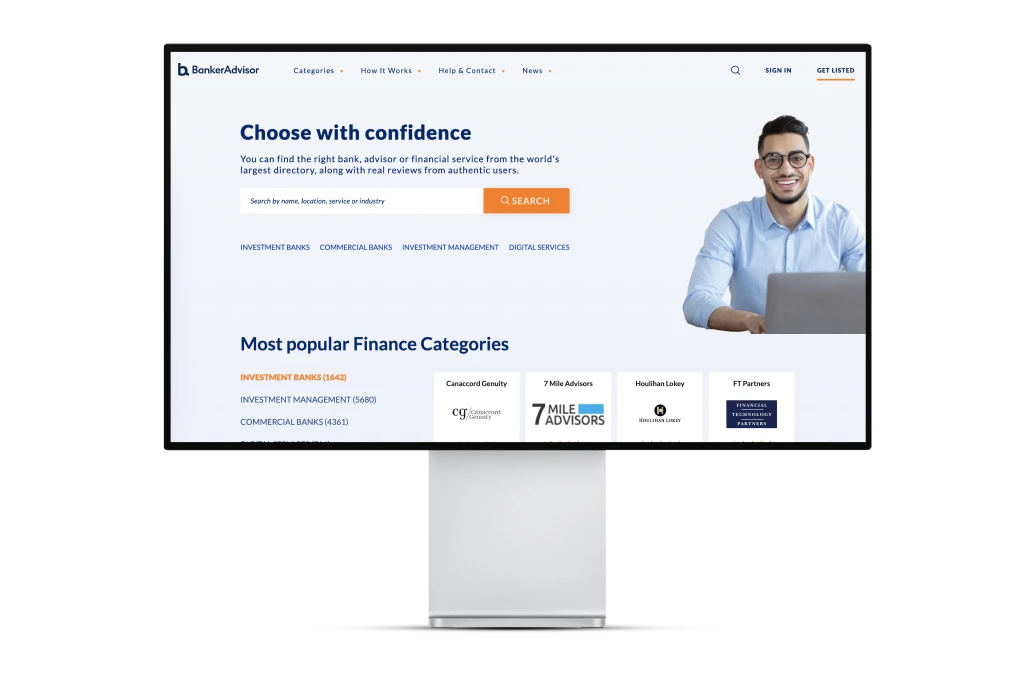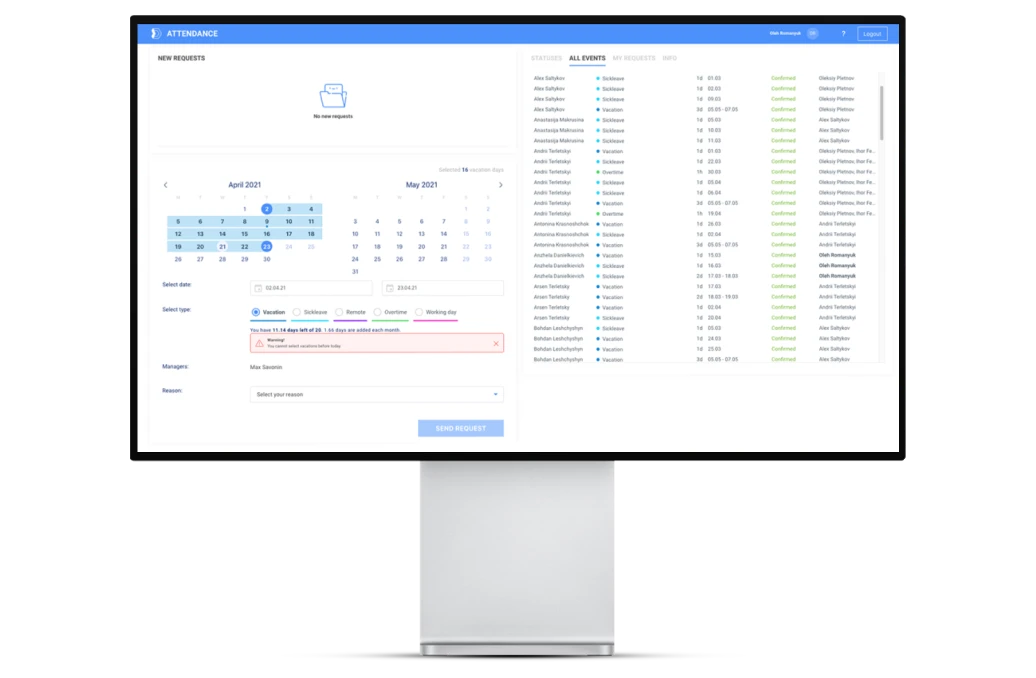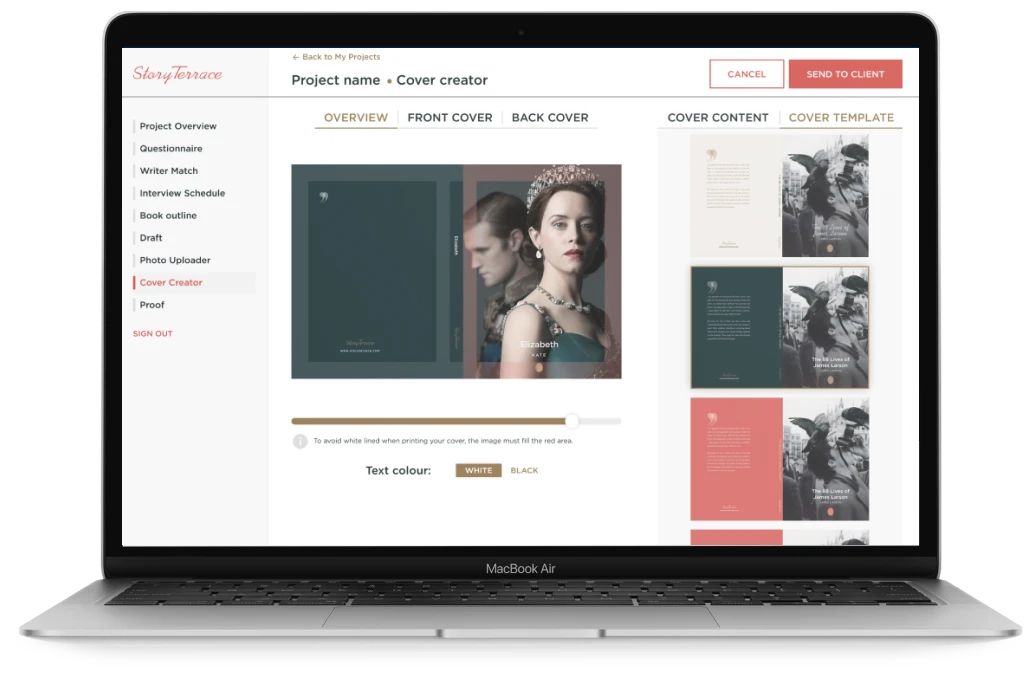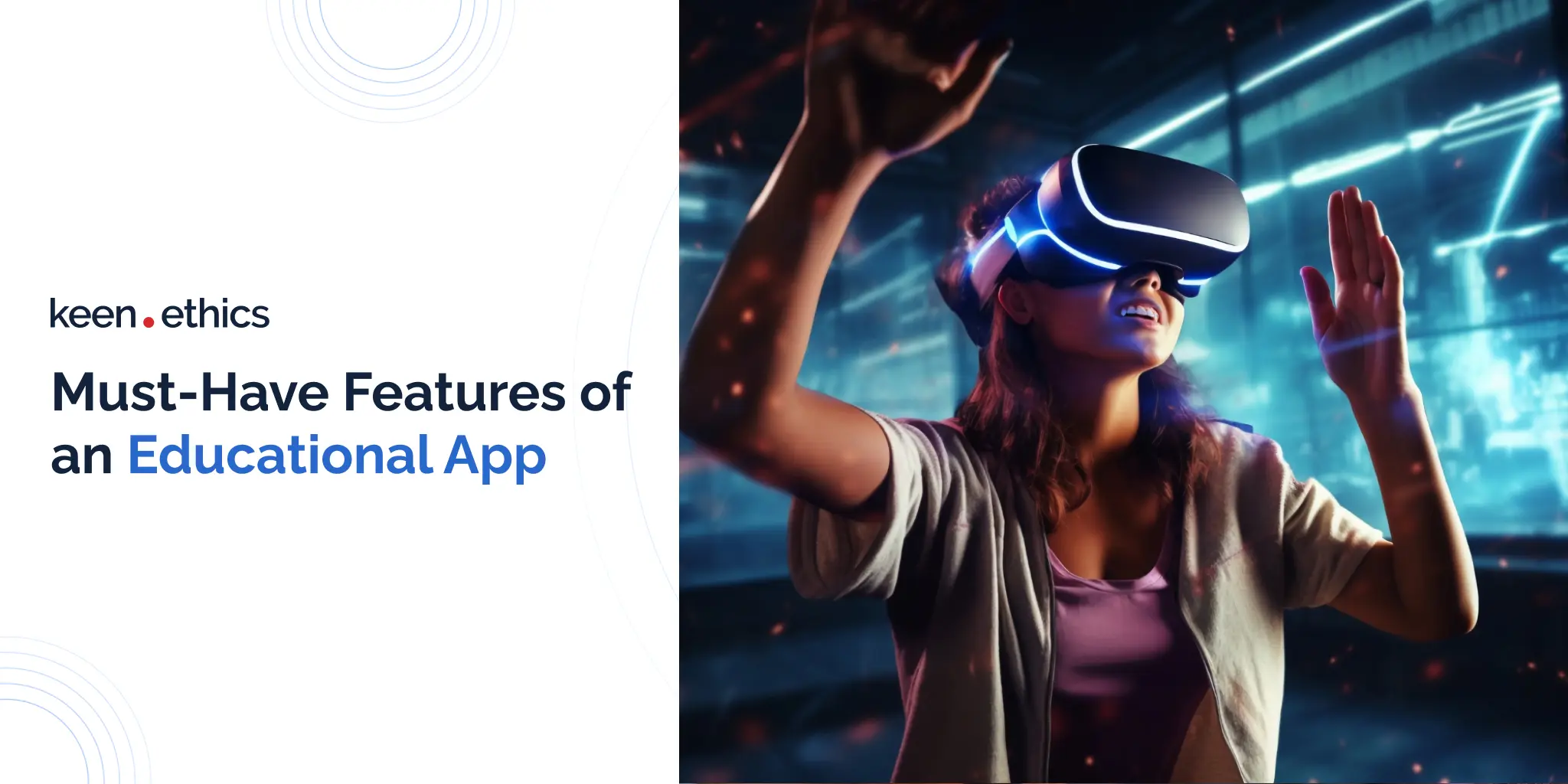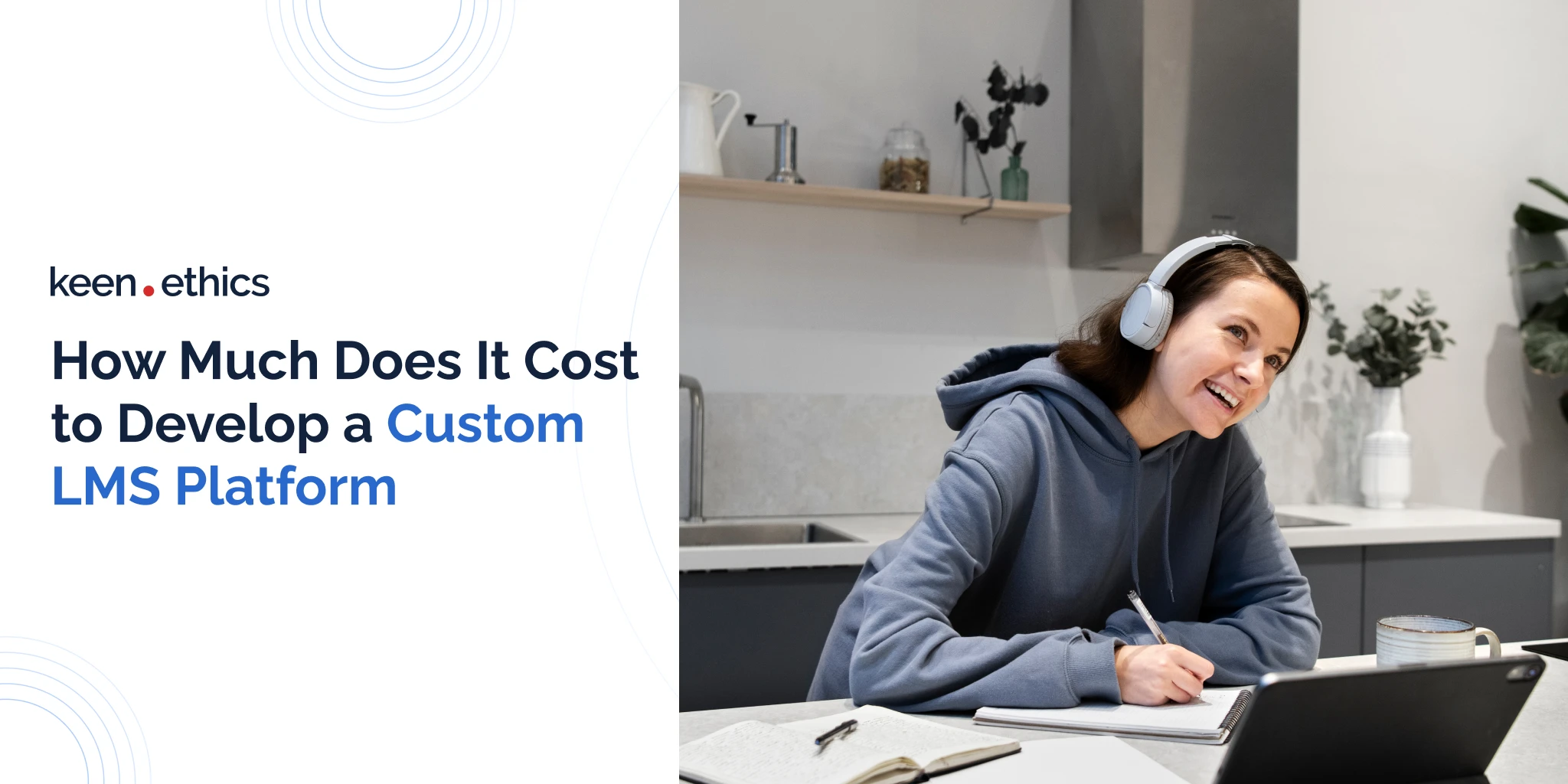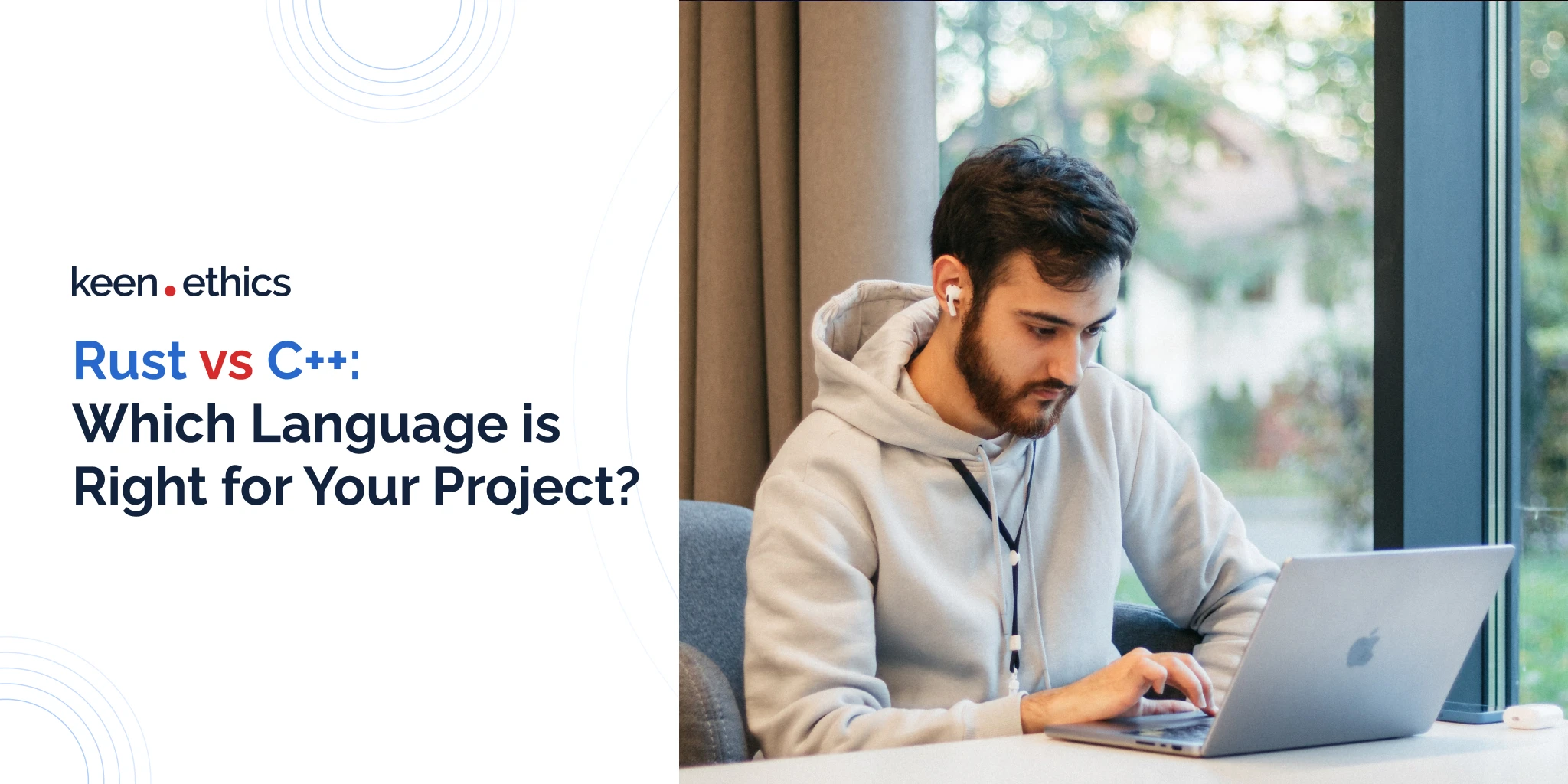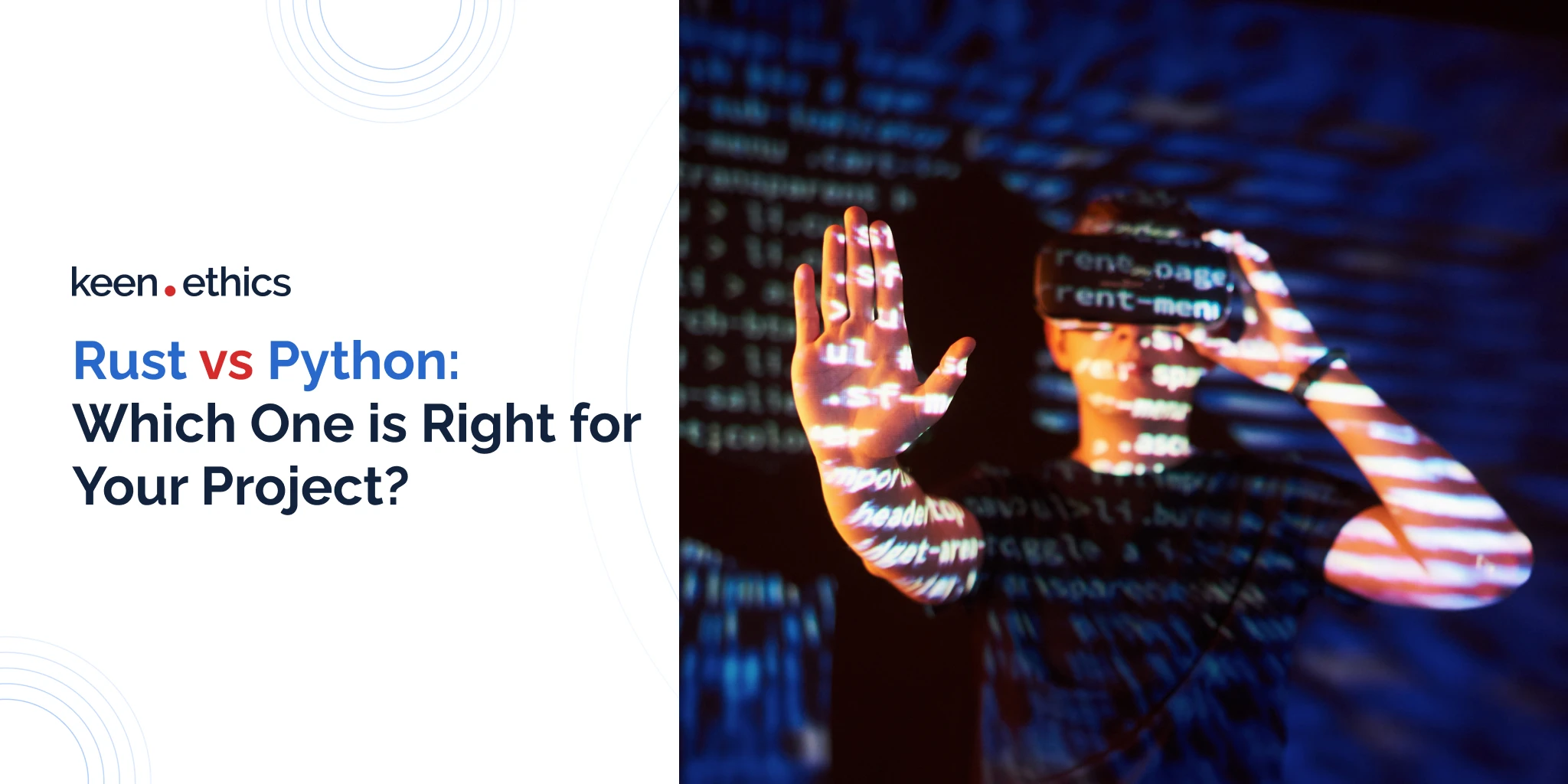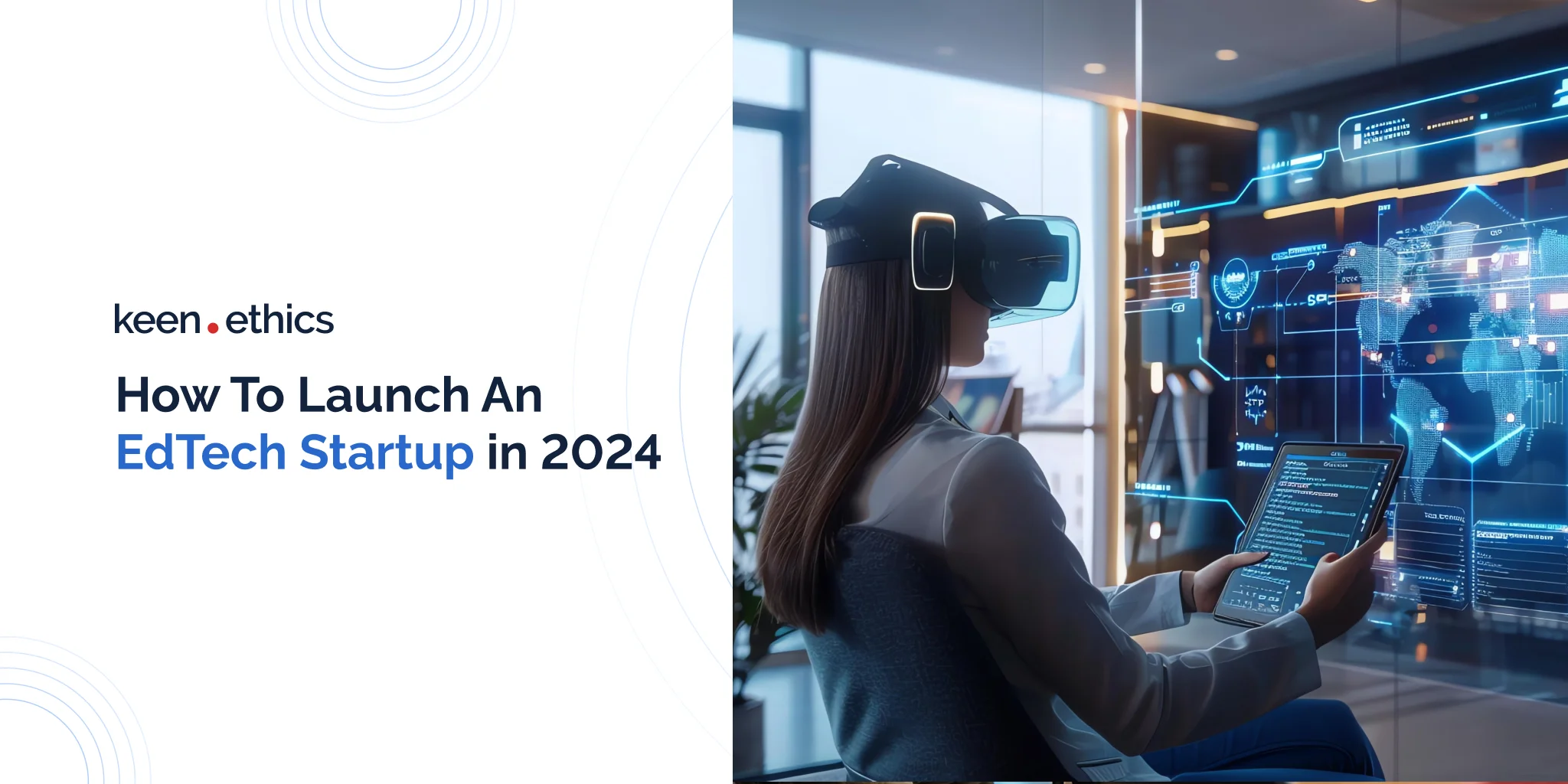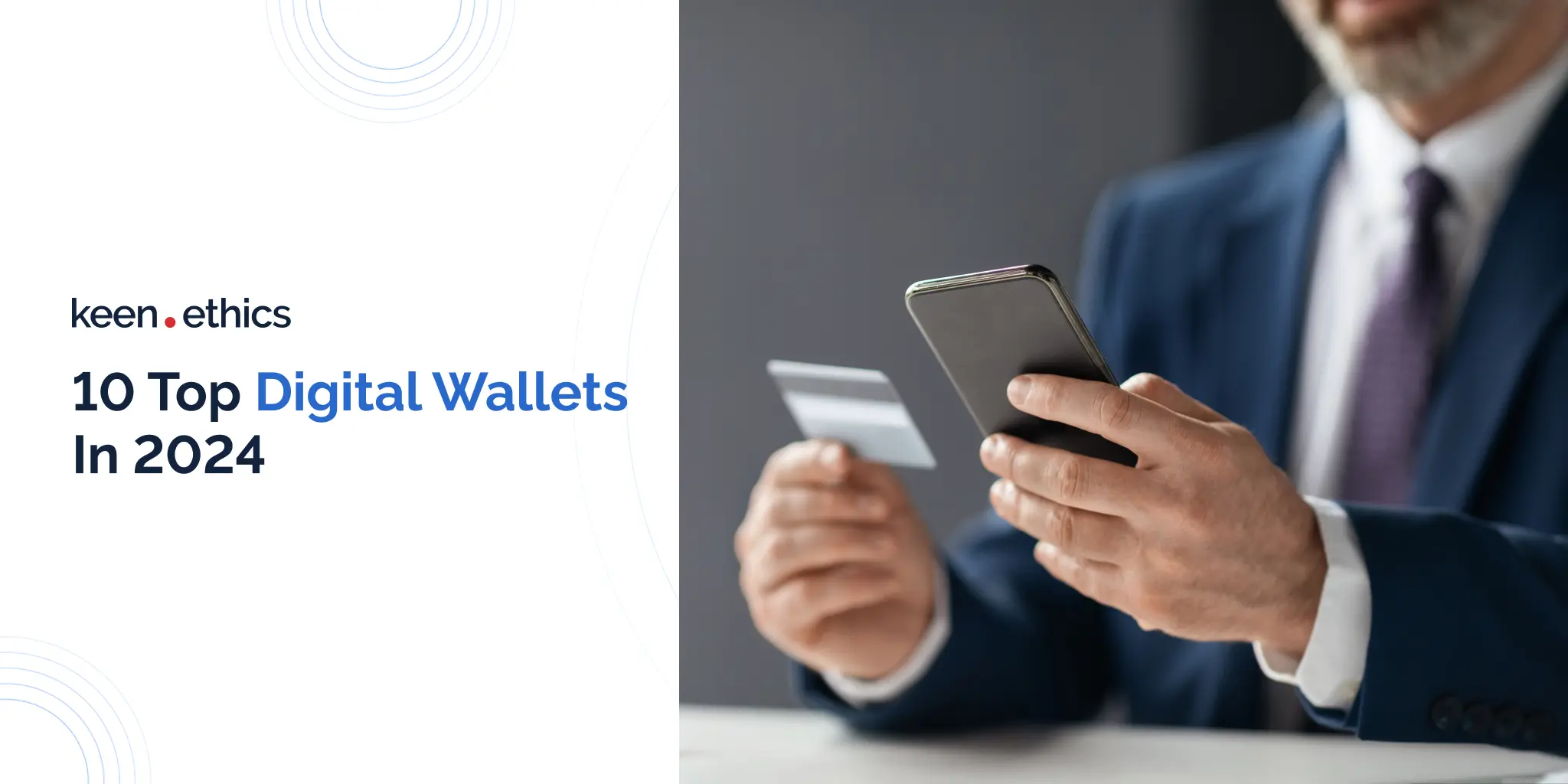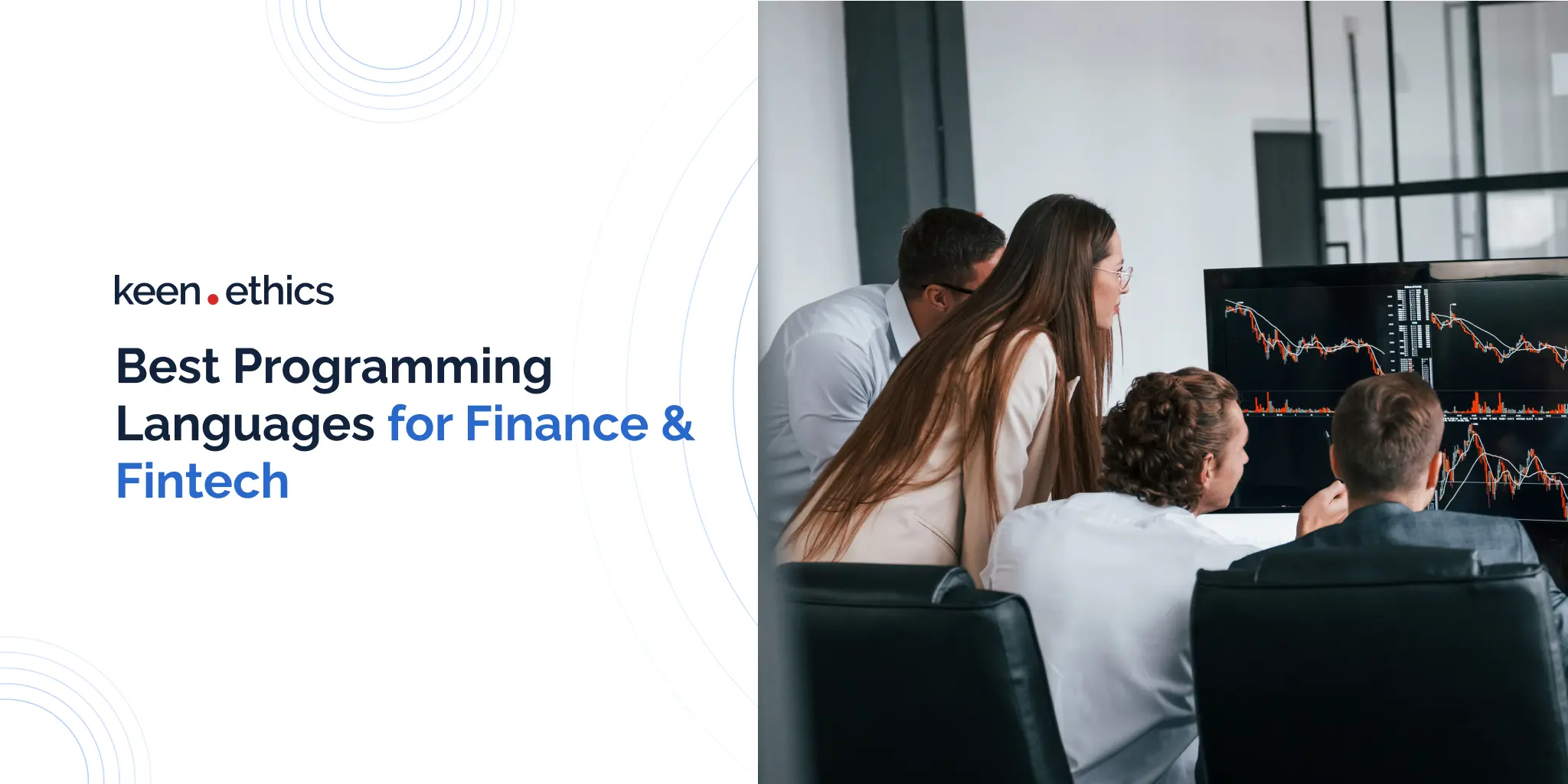The main goal of this article is to help the readers with orienting in the concept of mobile learning. You’ll find information about the core types of mobile learning content and understand its key benefits after reading this blog post.
What Is mLearning?
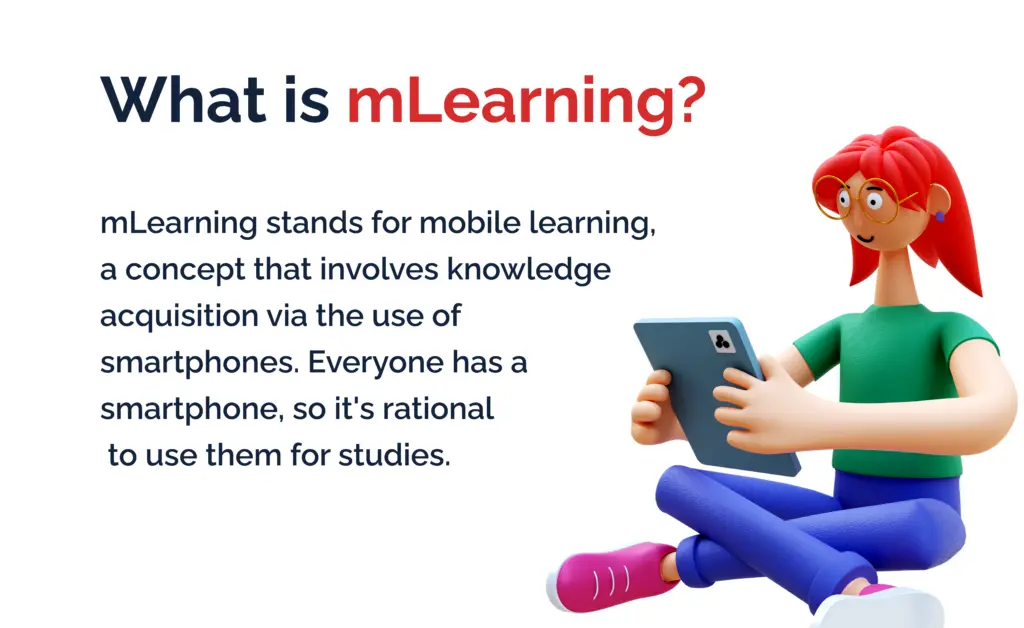
mLearning or mobile learning is the application of mobile technologies to the learning process. The most common way in which this methodology appears is in the form of some mobile learning program. For example, Duolingo is notable for offering a mobile app that eases the learning of various foreign languages. Khan Academy also provides its mobile learning platform to users through a mobile app.
Mobile learning isn’t only about transferring certain web or personal computer apps to mobile platforms. It also involves a massive investment into a unique mobile learning experience. This experience should guarantee the availability of the core app features combined with the integration of mobile controls. Porting an app isn’t simple: in reality, you also have to make the learning process comfortable by adjusting interfaces and offering high-quality controls for the users.
Examples of Mobile Learning
In our opinion, there are many examples of mobile learning on the market. Usually, it appears via the following application types:
• Course apps: apps like Khan Academy or edX are available to any user who wants to study new topics. They give clients access to various training materials that range from video lectures to quizzes and even challenge cases in virtual coding environments;
• Microlearning apps: many people don’t have enough time for reviewing educational content. As a result, certain apps provide short learning sessions for the relevant users. In language learning, they’re represented by apps like Duolingo and Memrise. More general platforms also include apps such as Anki and Cardflow, which enable users to study any topic they want.
• Reference apps: mobile education perfectly suits the reference guide format. Students often need to access some guides on mathematical formulas or require a review of vocabulary information. What’s the problem with this format? Many of the involved books are bulky, impeding traditional classroom training by limiting the number of reference materials. In turn, mobile platforms host myriads of apps that don’t take much space. Consequently, the learners can review mathematics and chemistry guides at the same time. Hundreds of apps belonging to this type are present in the app stores today.
Key Features of Mobile Learning
Modern mobile learning has a set of core features that can greatly boost knowledge retention and completion rates:
Microlearning
Microlearning is the ability to learn new information in small sessions that last between 5 and 15 minutes. Mobile platforms perfectly suit this style because they allow users to do online learning on their way to work or before going to sleep.
Social elements
A strong social element is vital for two reasons. Firstly, the availability of contact with other students through chats and forums can help them share learning styles and knowledge. Secondly, it instills a sense of competition by pushing learners to compare their results in an online course.
Easy access
We highly recommend making access to learning apps as simple as possible. Why is this so vital? Many people don’t have much time for personal training or learning. Seamless access can convince them that the app is worth their time.
Privacy and security
Some online training apps collect a lot of personal information. Consequently, you need advanced encryption to prevent leaks.
What’s the Difference Between eLearning and mLearning?
In our opinion, the difference between eLearning in general and mLearning is very significant and should receive maximal attention from experts. Yes, mLearning is a part of eLearning, but it has unique characteristics that create similarly unique requirements for the involved apps.
eLearning is the use of modern IT technologies for improving learning processes. For instance, it involves the use of Learning Management Systems in employee training. eLearning is platform-agnostic. One can engage in e-learning both on PCs and mobile platforms. Obviously, there’s a significant difference between the capabilities and control schemes in both types of devices.
On the one hand, desktops and laptops are rather immobile but offer large screens and comfortable and precise controls. They also enable the users to type information much faster than in mobile apps. On the other hand, mobile devices have very different control schemes and formats. They’re portable and, more importantly, are usually controlled via touch screens, which are far less accurate than mice/touchpads and keyboards.
Ultimately, this information means that mLearning has different requirements and capabilities. Firstly, modern mLearning is noteworthy for its unique control scheme demands that fit the capabilities of mobile technology. Secondly, they also provide some unique opportunities: for example, it’s possible to study in more places with them than with laptops. Hence, mLearning is uniquely suited to microlearning that packages an engaging learning experience into small sessions available from any location.
The Advantages of Mobile Learning
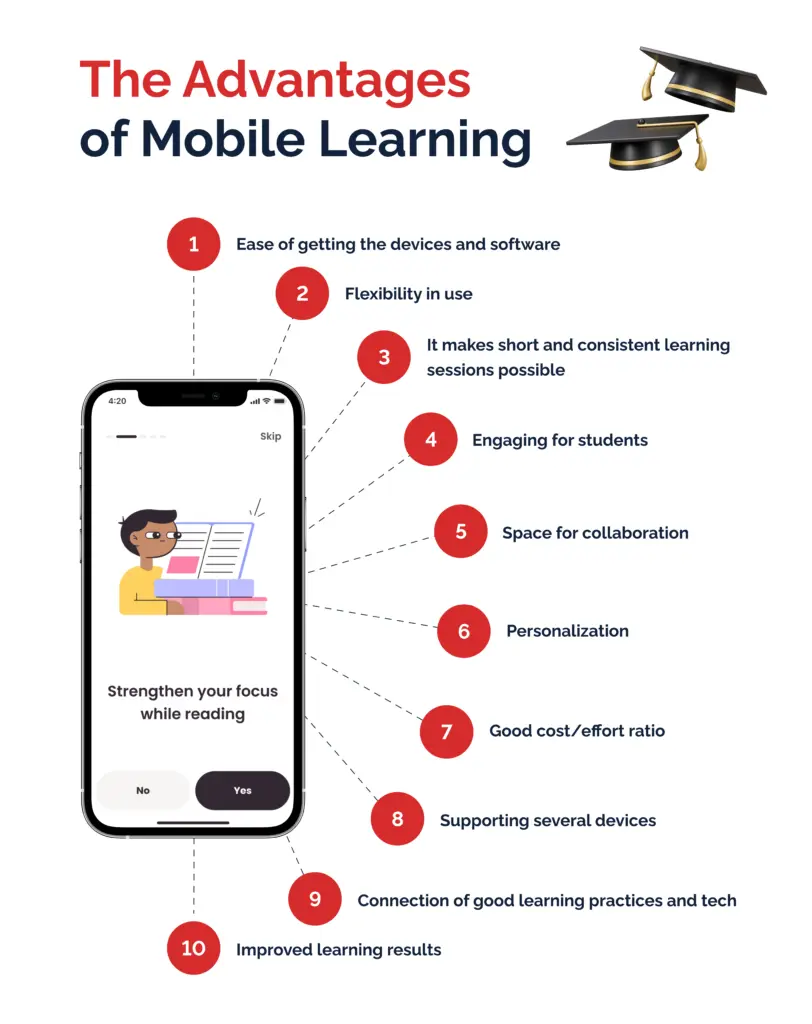
Modern mobile learning has a set of vital advantages that bring major knowledge acquisition capabilities during online course learning:
Ease of getting the devices and software
The first reason to use mobile learning is the ease of finding relevant devices and software. Smartphones are among the most accessible computing devices on the market these days. One can buy a powerful smartphone from companies like Xiaomi or Blackview with a small budget of 150–200 dollars. Many governments even invest in smartphones for learners. This means most individuals should be able to use the benefits of mobile learning. Moreover, the involved apps are often free (there are great open-source solutions like Anki) or have minor subscription fees. This makes smartphones the best devices for impoverished regions.
Flexibility in use
Smartphone devices are flexible as they feature countless apps offering mobile courses on any topic. Other types of apps are also very widespread. Users can access word processors and mnemonic card software or distance and social learning solutions. We’re sure readers can discover almost any imaginable learning approach implementation for their mLearning project in modern app stores. More importantly, most of them enable offline learning by allowing direct access to information from the internal memory.
Short and consistent learning sessions
One of the main ways to learn is by being consistent. A person has to study something every day, and mLearning makes this approach possible. Many smartphone apps enable this advantage by promoting small sessions of 5 to 10 minutes. The approach is perfect for situations where you don’t have enough time for learning. The benefits of mobile learning enable even people working 12 hours a day to study something and achieve notable improvements in their performance.
Engaging for students
What is mLearning? It’s a technology enabling the promotion of game-like competitive learning. Gamification features create an approach that transforms a traditional lesson format, which is usually associated with significant degrees of stress, into an engaging learning experience for students. Currently, a tremendous number of high-quality learning options is available. RPGs and even action games for learning are out there. For example, an app named Habitica allows adopting some learning habits via a role-playing game, where the user upgrades their in-game character.
Space for collaboration
Smartphones enhance learning by interconnecting users through content. Apps like Duolingo or Anki allow their clients to exchange data using Bluetooth or the Internet. Forums and chat functions are perfect for sharing knowledge or giving tips on improving the main learning methodologies.
Personalization
Many mLearning apps adapt to the needs of the users. On the one hand, small modifications are available to the involved clients: students can choose the color scheme of their interface or change the location of some buttons. On the other hand, modern AI-centric software also enables them to configure the difficulty of learning. This approach engages students and saves time. Teachers don’t have to create tasks for learners with different levels of knowledge because they get their custom mobile experience.
Good cost/effort ratio
Smartphones (along with Chromebooks, if you need something bigger) are some of the cheapest computing devices. They may be slow: that’s one of the disadvantages of mobile learning. However, even a low-cost smartphone and open-source software can quickly boost your classroom by introducing simple programs. The impact is great, and the price isn’t that large.
Supporting several devices
Most apps on the market support several device types. Firstly, despite different OSes, the majority of apps are cross-platform. Oftentimes, you can find them on Android and iOS. If the readers are keen to learn more about the topic, you can read the following article. Secondly, different types of devices are also compatible: tablets and smartphones usually feature the same software. In this way, teachers don’t have to care about the choices of the children’s parents. They can discover cross-platform apps and continue with them.
Connection of good learning practices and tech
mLearning allows you to transform educational habits. Let’s take flashcards, the best method for learning isolated information, as an example. Apps like Anki make this process convenient by delivering a comfortable interface and grouping all cards. All that remains to do is add content. The mathematical complexity of the card method is already prepackaged in the app: there’s no need to interact with it. Tech makes your favorite learning practices easier to use, upgrading access to education.
Improved learning results
All these factors lead to big improvements in learning results. Greater engagement and the simplicity of complex methods eventually push people to be more serious about this process. AI technologies are also great at adapting to the needs of the users. Hence, they complete courses and do their homework with greater discipline due to a personalized learning experience.
The Disadvantages of mLearning
Short attention span
Mobile learning environments advantages and disadvantages lists should never omit the problems of smartphones. What do we mean by that? They encourage a culture of distraction because short video platforms and social media can disrupt your attention span. If you use smartphones in the classroom, there’s always a chance that students may start concentrating on them too much. It’s tempting to go on TikTok instead of studying in corporate training or exam courses.
Internet connection requirements
Some learning platforms depend on online tools too much, so teachers can’t use them adequately without the Internet. And, here’s a big concern for everyone: Internet connection isn’t always good. Certain regions suffer from notoriously abysmal Internet. You have to consider this factor in your learning environment. If you don’t, then your entire learning plan can fail (especially if one relies on video platforms such as Zoom or stores all core course content in Learning Management Systems). However, we believe this problem will be less acute in the future. Starlink shows that it’s possible to have Internet even in the most remote rural locations.
mLearning Trends
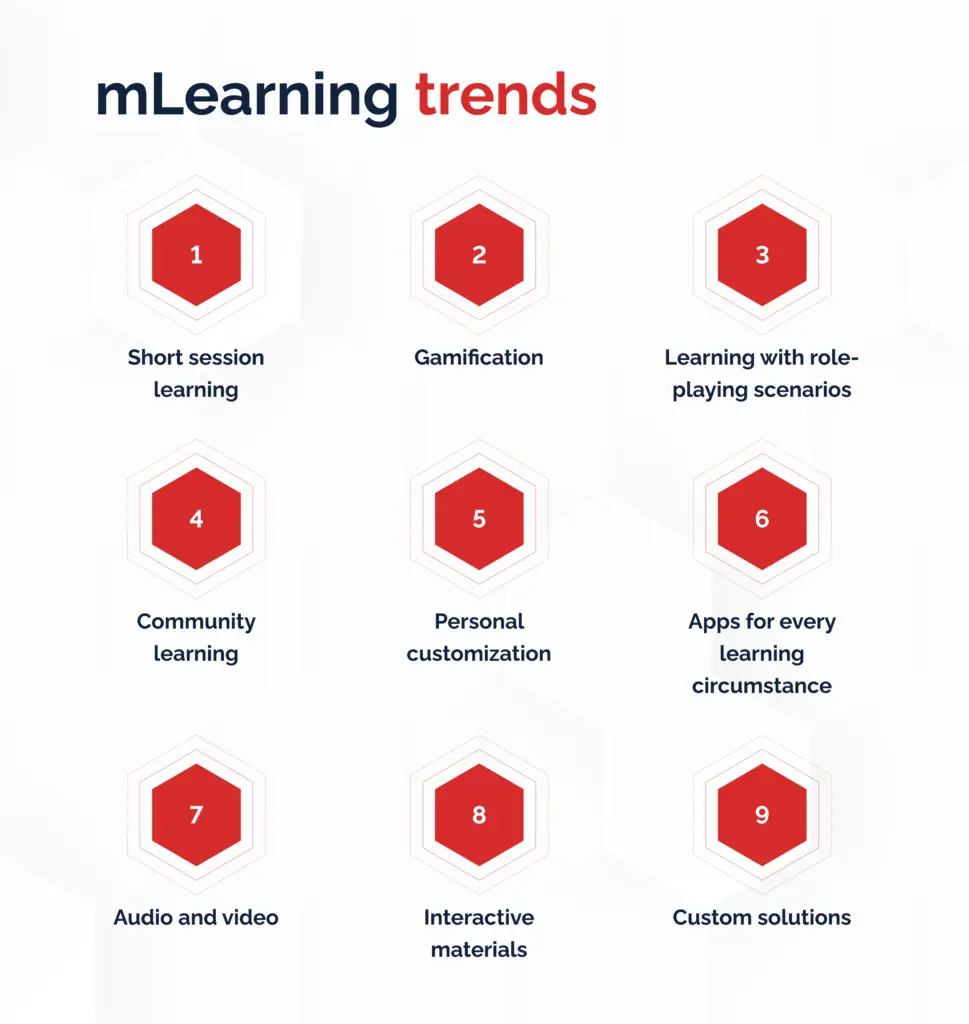
Many companies are concentrating on mLearning today. Let’s review some of the best use cases for this technology. These trends are usually among the most impactful in the presented sector:
Short session learning
mLearning trends give a chance to engage in small learning sessions, where educators can maximize the amount of useful learning per minute. For example, apps like Duolingo enable one to engage in 5- to 10-minute learning sessions.
Gamification
We live in a world where video games are very popular: hence, it’s not surprising why gamification in mLearning is a strong trend. For instance, teachers can use an RPG-like system (like the one used in Duolingo, where users get XP and compete in a ladder for some prizes) to reward progress in a mobile learning app.
Learning with role-playing scenarios
Sometimes, the best way to learn is to practice. Imagine giving students a chance to act as business professionals. mLearning delivers tools for creating such scenarios for social interactions. You can make people “CEOs” or “engineers” to test various work-like scenarios. In this way, they get to study through real practice.
Multiple options for learning
Flexibility is also the key to the success of mLearning. Teachers have a large choice of apps on the presented market. Consequently, it’s possible to create different learning opportunities depending on user needs. The modular approach of apps is a part of the mobile learning definition.
Community learning
Mobile learning apps also enable learning in groups by engaging many people and offering great tools such as chats for their communication. Platforms like Google Classroom make modern learner engagement especially easy in this respect. Some of those solutions are free, so you can start using them even now.
Personal customization
Many mLearning apps also support personal profiles. This means a student can adjust an app to their needs and promote learning approaches that fit their goals specifically. The users get to provide photographs and profile descriptions, choose how an app looks, and even select some learning courses.
Apps for every learning circumstance
Users can discover m-Learning apps of almost every kind on the market. One may accomplish many tasks with contemporary software, as multiple niches are already covered by products available in the market. More importantly, countless companies are developing new solutions that will solve even more problems.
Audio and video
mLearning also makes it easy to use audio and video. As a result, showing movies or lectures in class is an easy process. YouTube, for instance, changes the learning landscape by allowing users to access the lectures of teachers from different countries via video format.
Interactive materials
Some video and audio materials are also interactive. Teachers can answer questions within them or even provide the students with interactive learning stories. Modern smartphones enable educators to use these tools without barriers. Training content or lectures are ideal in this format. Users can find interesting examples of the presented approach on Khan Academy, edX, Coursera, or Udemy.
Custom solutions
You can create your mLearning examples by targeting custom software. It’s possible to ask development companies to present unique solutions. Clients get to choose from a wide set of firms providing such services. We, for example, offer help with developing mLearning apps. Why should you try this option? Above all, because it gives flexibility: your app means you are the one establishing rules.
Key Tips For Succeeding with Online Learning Apps
Here are the core tips for helping you succeed with online learning apps. Using them, you’ll be able to maximize the impact of your application.
1. Minimize entry efforts
The first aspect we recommend investing in is improving the initial impressions your app offers. How to achieve this vital goal? You can do this by minimizing the efforts necessary for adopting the app into one’s routines.
Here are some core tips:
1) Make your app available on official app stores so that it can be downloaded after a short search;
2) Avoid internal registration: many users will abandon your product if they have to fill in multiple traditional registration forms. Use the internal authentication systems of Android and iOS instead for this goal. In an ideal situation, a user should be able to start using your app in one or two taps.
3) Avoid lengthy configuration: configuration may sometimes be necessary for an app. For example, language apps need to know what language the users want to study and what level of knowledge they have. A major mistake of app developers is to make those tests longer than 10 minutes. The less user time you take away, the better.
2. Make mobile users first-class citizens
A major problem of various mobile learning apps is that they don’t treat mobile app learners as first-class citizens. This is common for apps that have desktop or web versions. In many situations of this kind, the developers simply put their apps into containers and offer web versions of the programs as “complete mobile experiences.” This negligent approach is typically visible to mobile users and rightfully receives negative assessment from them. Consequently, the best choice to consider for mobile app developers is to make a major investment in mobile-centric experiences. If you want to minimize costs in this regard, try out technologies such as React Native. They enable native-like performance that works across several platforms.
3. Enable multimodal learning
Multimodal learning is among the best approaches for enhancing learning. What does this approach imply? It involves a combination of video, audio, text, images, and even virtual reality. Current research indicates increasing interest in this method due to its significant positive influence on learning. Hence, adding this approach to your app is a great idea. For instance, it can be used to enhance your course app.
4. Add game-like elements
Traditional learning is unpopular for one simple reason: it’s usually stressful because of tremendous mental energy requirements. Memorization and information processing create significant pressure on average learners. Game-based studying removes this common issue of traditional learning by making it fun and engaging. What’s our core recommendation here? Try to focus your entire app around game-like approaches as much as possible. Don’t add them as an afterthought.
5. Use a simple and light-hearted tone
Numerous people associate formality and seriousness with traditional learning. As a result, their presence can easily disrupt an efficient learning strategy. What should you do here? In our opinion, the answer is straightforward: try to make the tone of your app lighthearted and friendly. The users should feel that they engage in an entertaining experience rather than a traditional classroom learning session.
6. Promote continuous learning
Are you unsure about the sector you want to choose for your app? Our recommendation here is to focus on continuous learning. This concept stands for learning that occurs after a person joins a certain workforce. Why do we make this recommendation? Post-college/school learners are usually the group that receives the least amount of attention from learning experts. By targeting this group, you have the greatest chance of covering some interesting employee training niches with your mobile learning tools.
Our Experience in mLearning Development
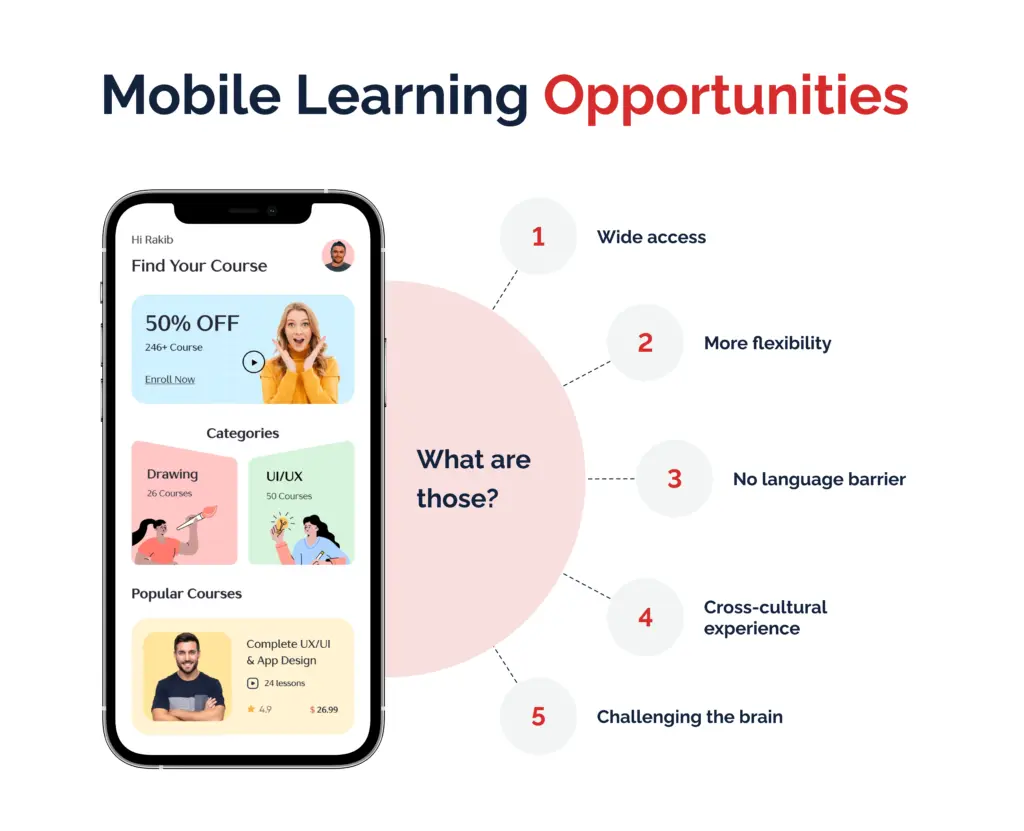
Our company also has a lot of experience in developing mLearning apps. What are some of them? For instance, Keenethics is proud of helping the SelfLeaders team, which maintains a self-improvement app for personal development. We also helped develop an app called Let’s Start Coding, which allows children to learn the basics of programming. You can find more projects in our portfolio.
Conclusion
To summarize, mLearning is a perfect solution for modern classrooms. We recommend it to everyone who wants to improve their students’ learning experience. Software for almost every learning goal exists on the market. More importantly, numerous firms deliver custom solutions. You can hire specialists to make the apps of your dreams.
FAQs
What does mobile learning stand for?
What do mLearning platforms represent?
These are learning platforms that use mobile devices, such as smartphones and tablets.
Can you give some examples of mLearning?
Yes, there are some major success cases on the market. They involve Duolingo, a language learning app, and Khan Academy, an app with a large collection of free courses.
Why is mobile learning great for corporate training?
It has two great aspects that help corporate training. On the one hand, mobile learning allows one to study from any location. On the other hand, it’s easy to make it regular through notifications and rewards.
Our company has experience with many education apps and can help develop your own!
 Search
Search



